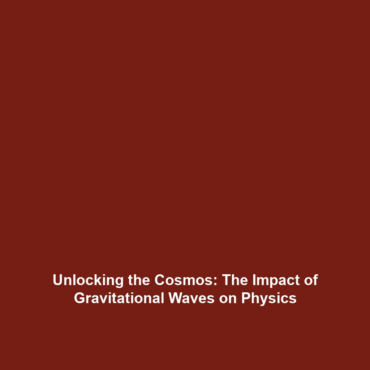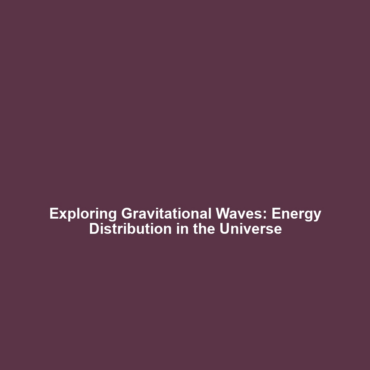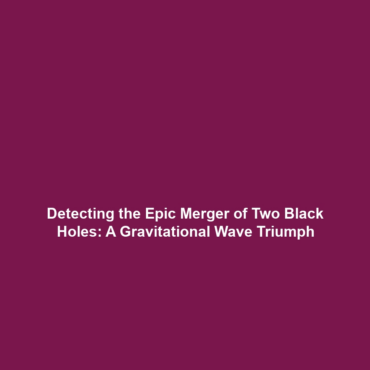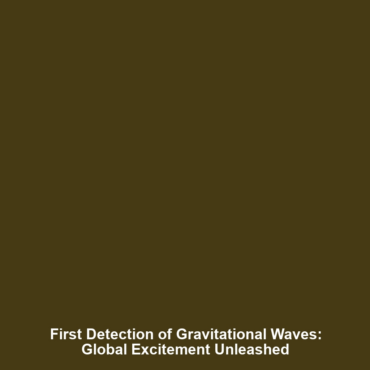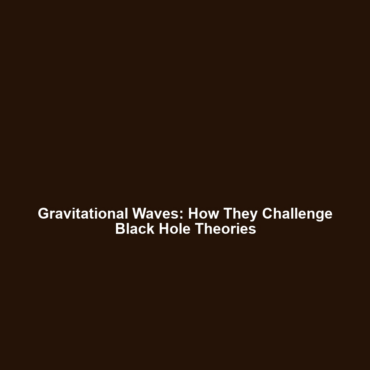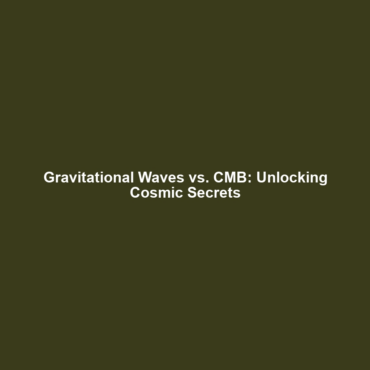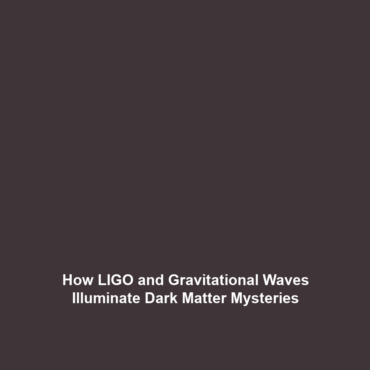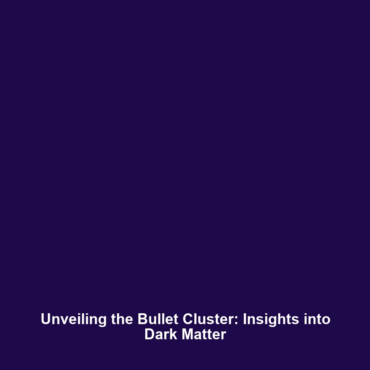The Significance of Gravitational Waves for Physics and Astronomy
Since the groundbreaking discovery of gravitational waves in 2015, their significance for physics and astronomy has become increasingly clear. These ripples in space-time, predicted by Albert Einstein over a century ago, opened a new window into the universe. The study of gravitational waves not only provides insights into extreme cosmic events but also strengthens the understanding of fundamental physics. This article explores the profound implications of this discovery, the key concepts associated with it, real-world applications, current challenges, and future research innovations.
Key Concepts
Understanding the significance of gravitational waves involves several important concepts:
- Relativity: Gravitational waves are direct evidence of Einstein’s theory of general relativity, which describes how massive objects warp space-time.
- Black Holes and Neutron Stars: The fusion and collision of these celestial bodies generate the strongest gravitational waves, providing information about their properties.
- Electromagnetic Signals: Combining data from gravitational waves with electromagnetic signals helps to study astronomical events in a multi-messenger approach.
Applications and Real-World Uses
The significance of gravitational wave discovery extends beyond theoretical implications in physics and astronomy. Notable applications include:
- Astrophysical Research: Gravitational waves allow astronomers to detect and analyze distant cosmic events, such as collisions between black holes.
- Testing Fundamental Physics: Scientists use gravitational waves to test the limits of general relativity under extreme conditions.
- Understanding Cosmic Events: They provide unique insights into the composition and behavior of the universe, enhancing knowledge of dark matter and energy.
Current Challenges
Despite the exciting developments, several challenges persist in studying gravitational waves:
- Detecting weaker signals amidst significant noise remains a complex task for researchers.
- There is a need for advanced technology to enhance sensitivity and detect more distant events.
- Interpreting the data from gravitational waves requires interdisciplinary collaboration across physics and astronomy.
Future Research and Innovations
The future of research into gravitational waves looks promising with initiatives focused on:
- Space-based Detectors: Projects such as LISA (Laser Interferometer Space Antenna) aim to create a new era in gravitational wave astronomy.
- Improved Ground-based Detectors: Enhancements to existing facilities like LIGO and Virgo will allow for more precise measurements.
- Interdisciplinary Collaborations: Researchers are encouraged to combine gravitational wave studies with fields such as quantum mechanics and cosmology.
Conclusion
In summary, the discovery of gravitational waves represents a monumental shift in physics and astronomy, fundamentally enhancing our understanding of the universe. As research progresses, it is imperative to address current challenges while embracing new innovations and collaborations. To stay informed about breakthroughs in gravitational wave astronomy and their significance for theoretical physics, consider exploring related topics on our site. Together, let’s continue to unravel the mysteries of the cosmos.
